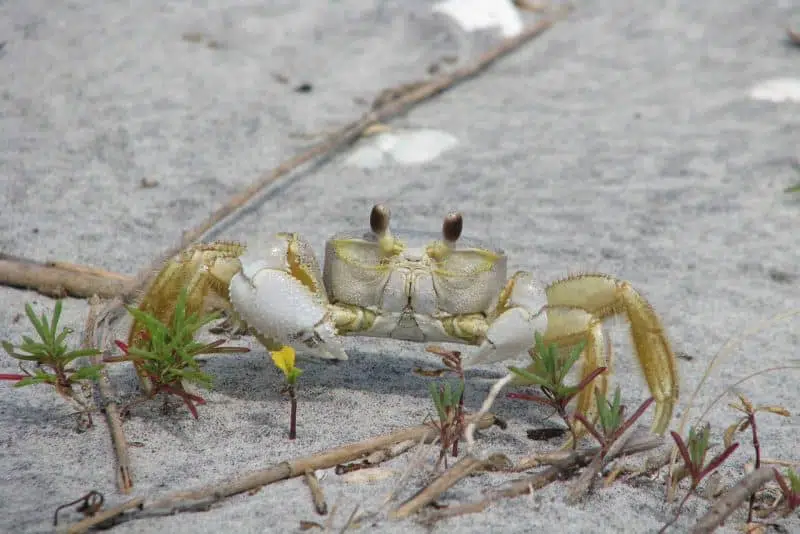Welcome to animals that start with G.
Animals that begin with the letter G are pretty fascinating. Some are common, and we see them every day, others might be pets and some might even be unkown to us! I hope you learn something new from this list. Let’s begin.
Read the entire article or jump to any section below:
Overview of Animals That Start With G
1. Gaboon Viper

| Scientific Name | Bitis gabonica |
| Where It Lives | rainforests and nearby woodlands |
| What It Eats | Their diet mainly consists of small and medium-sized mammals and birds |
| Conservation Status | Least Concern |
Fun Fact: One eye of the Gaboon Viper can look forward while the other eye is facing backward.
You can find this venomous snake in sub-Saharan Africa in moist and warm habitats. It is nocturnal, and it takes a lot to provoke it, making bites quite rare. When it does bite, it doesn’t let go quickly.
The snake’s neck is narrow, but its head is massive, broad, and shaped like a leaf. It also has horns between its nostrils. It is the largest venomous snake in Africa.
2. Galapagos Penguin

| Scientific Name | Spheniscus mendiculus |
| Where It Lives | Endemic to the Galapagos Islands |
| What It Eats | Their diet consists mostly of small schooling fish |
| Conservation Status | Endangered on the IUCN Red List |
Fun Fact: Both Galapagos Penguin parents incubate the eggs and feed the chicks
This penguin is unique. It looks like a regular penguin, but one significant difference in appearance is the curved stripe of white feathers along the sides of the head and the breast area. It lives in warmer climates.
3. Garden Eel

| Scientific Name | Heteroconger |
| Where It Lives | Tropical and subtropical waters, living in sandy burrows on the ocean floor |
| What It Eats | Plankton and other small particles drifting in the water |
| Conservation Status | Not listed as endangered, but specific conservation status may vary by species |
Fun Fact: Female Garden Eels can change their sex if there are few or no males in the colony.
This carnivorous aquatic animal spends most of its time with its tail in the sand. It never entirely comes out, making it look like grass. It is an opportunistic feeder that waits for food to come to it.
The Garden Eels have big eyes, sharp teeth, a short nose, and one fin. Its body is long and slim.
4. Garter Snake

| Scientific Name | Thamnophis |
| Where It Lives | Diverse habitats ranging from woodlands and meadows to marshes across North America |
| What It Eats | Amphibians, earthworms, leeches, slugs, and sometimes small fish |
| Conservation Status | Generally not endangered, with a stable population |
Fun Fact: The Garter Snake’s bite released a neurotoxin that is too mild to cause any reaction in humans.
This is North America’s most common snake. It is also called a garden snake because it is commonly found in gardens. Many people use garter snakes as a pest control method.
5. Gazelle

| Scientific Name | Gazella |
| Where It Lives | Various species occupy different habitats, including savannas, grasslands, and deserts in Africa and Asia |
| What It Eats | Grasses, leaves, and shoots |
| Conservation Status | Varies by species, with some like the Dama Gazelle being critically endangered |
Fun Fact: A gazelle is capable of leaping up to 10 feet high and can reach speeds of 60 mph in brief sprints.
Gazelles can be found in Africa and Asia. Unlike other antelope species, only males have horns, both male and female gazelles possess long, curved horns.
These species are critically endangered.
6. Geoffroy’s Tamarin
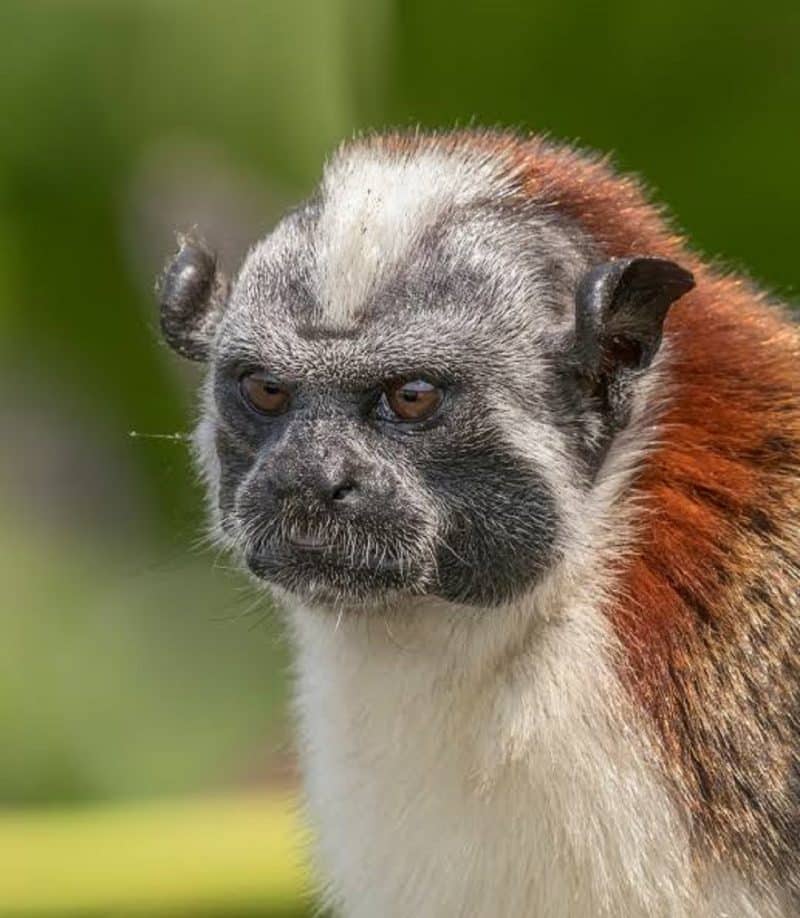
| Scientific Name | Saguinus geoffroyi |
| Where It Lives | Forests of Panama and Colombia |
| What It Eats | Fruits, insects, and small vertebrates |
| Conservation Status | Least Concern |
Fun Fact: Geoffroy’s Tamarin can jump 16 feet from one treetop to another.
This mammal has a thick stripe of white hair on its head. That, and the red section of fur at the back of its neck, make it very distinctive.
They are found in South and Central America and live in troops.
7. Gharial
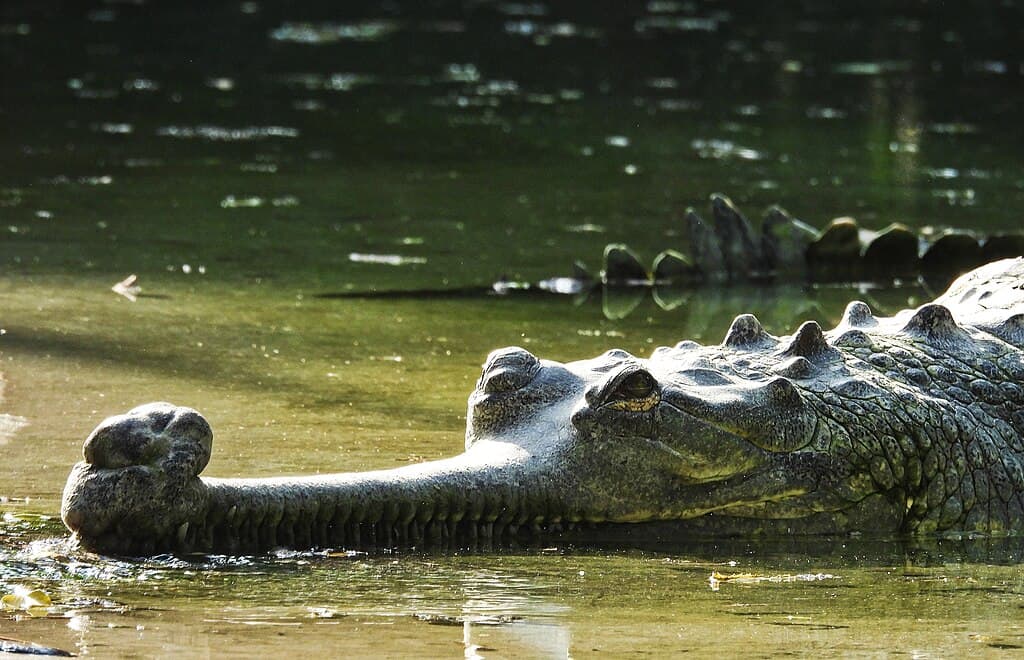
| Scientific Name | Gavialis gangeticus |
| Where It Lives | River systems of the northern part of the Indian subcontinent |
| What It Eats | Mainly fish, but also small crustaceans |
| Conservation Status | Critically Endangered |
Fun Fact: Gharials have the largest eggs of all the crocodilian species.
Gharials can be found in Northern India and Nepal. These reptiles have plate-like scales that prevent sunburn and evaporation.
Their most distinguishing feature is their elongated, slender snout. Unlike other crocodilians, the gharial does not have strong hind legs to walk, so it remains in water most of the time. The male gharial has a bump on its snout that helps it blow bubbles. That is an act necessary in the ritual.
8. Ghost Crab

| Scientific Name | Ocypode |
| Where It Lives | Sandy shores and beaches around the world |
| What It Eats | Omnivorous diet, including small animals and detritus |
| Conservation Status | Not specifically listed, but populations are not currently believed to be under significant threat |
Fun Fact: The eyestalks of the ghost crab can swivel 360 degrees.
Scientists call it the Ghost Crab because of its whiteness. Both the males and females have unequal sizes of claws.
It also possesses long and large eye stalks.
9. Giant Clam

| Scientific Name | Tridacna gigas |
| Where It Lives | Coral reefs in the South Pacific and Indian Oceans |
| What It Eats | Photosynthetic algae (zooxanthellae) living in its tissues provide most of its nutrients through photosynthesis |
| Conservation Status | Vulnerable |
Fun Fact: They attach themselves to coral reefs and never detach.
These clams have a thick, heavy shell with fluted edges that protects the mantle, or soft tissue, inside it. The algae stored in this clam’s body is what makes its mantle colorful.
It can be as long as 4 feet and as heavy as 500 lbs.
10. Giraffe
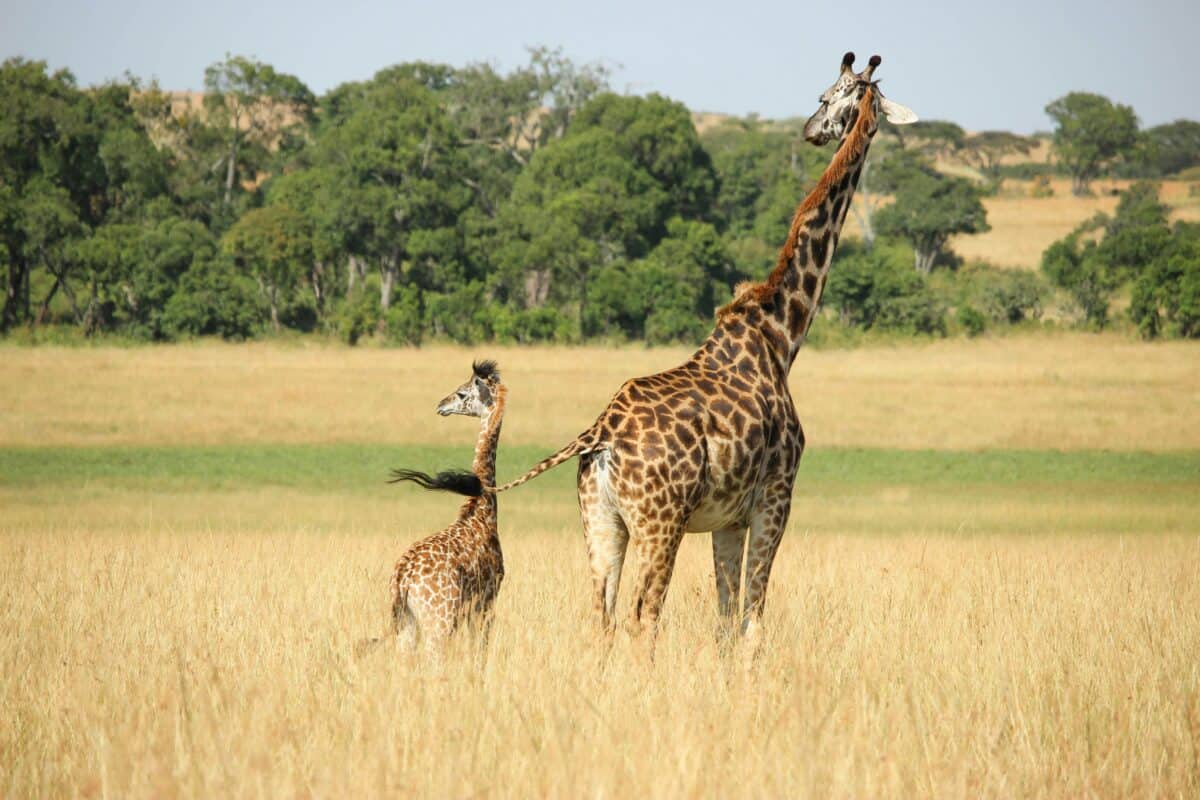
| Scientific Name | Giraffa camelopardalis |
| Where It Lives | Savannas, grasslands, and open woodlands of sub-Saharan Africa |
| What It Eats | Leaves, fruits, and flowers of woody plants, primarily acacia species |
| Conservation Status | Vulnerable |
Fun Fact: A Giraffe’s tongue can grow as long as 18 inches.
The Giraffe is a long-necked, hoofed mammal natively found in sub-Saharan Africa. The Giraffe is the tallest living animal on land.
The Giraffe tends to be white with unique brown or reddish markings that cover its body.
11. Glass Frog
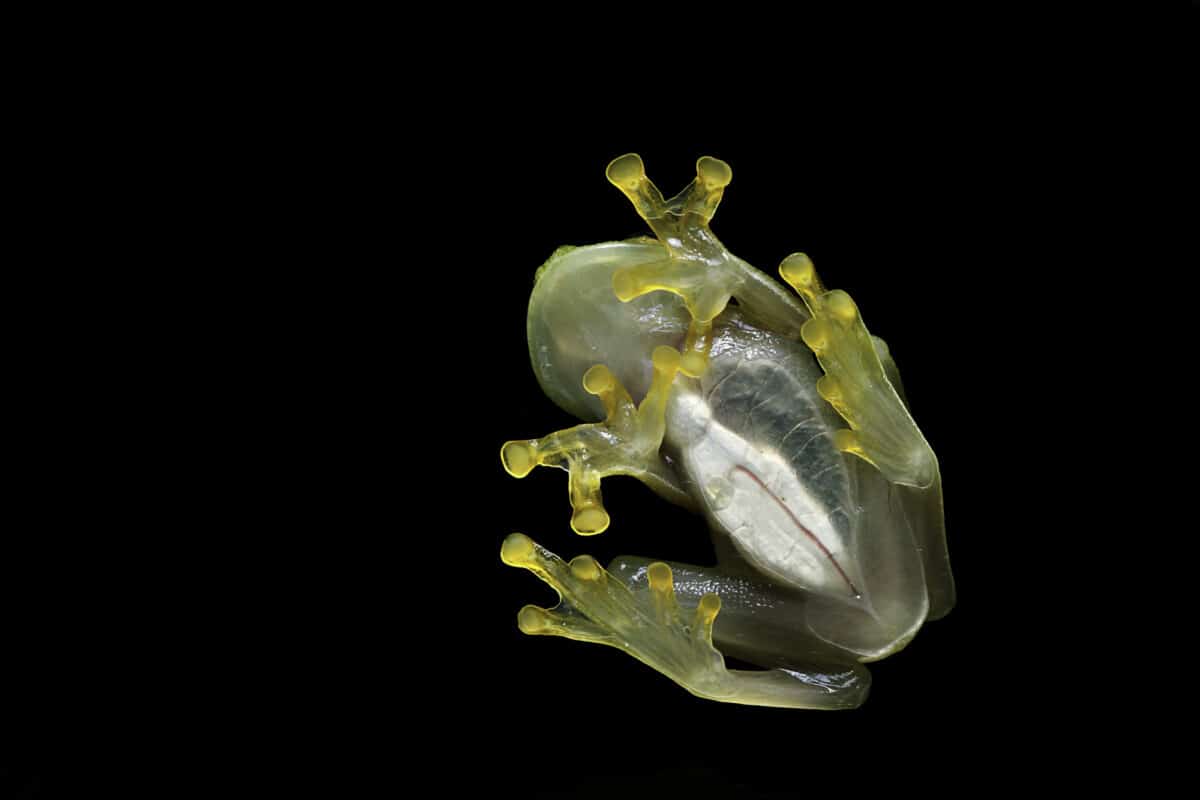
| Scientific Name | Centrolenidae spp. |
| Where It Lives | Trees and vegetation near rivers and streams in Central and South America |
| What It Eats | Insects, including flies and ants |
| Conservation Status | Many species are considered threatened due to habitat loss and pollution |
Fun Fact: In some species of Glass frogs, the beating heart can be seen through the translucent skin.
Glass frogs are beautiful, exotic frogs in South America, Southern Mexico, and Central America.
Glass frogs are usually tiny. The bodies are lime green on the top and transparent when viewed from underneath, revealing all their internal organs.
12. Glowworm
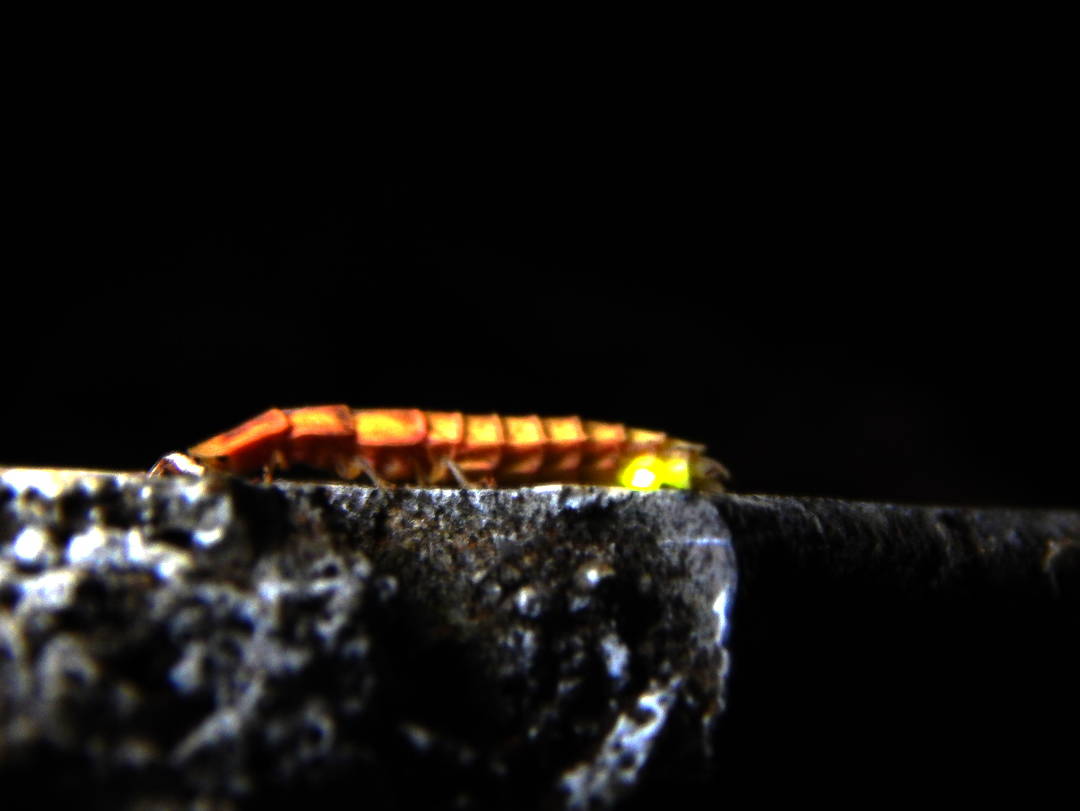
| Scientific Name | Keroplatidae |
| Where It Lives | Found in sheltered places such as dense woodlands, caves, and overhanging banks in various parts of the world |
| What It Eats | Glowworm larvae are generally predatory, feeding on small insects |
| Conservation Status | Not globally assessed, but local populations can be affected by habitat destruction and pollution |
Fun Fact: Only the female glow worms emit light.
Glowworms can produce light through entirely organic means, which is called bioluminescence. This light can be emitted as a series of flashes or as a constant glow, and it ranges in color between green, yellow, orange, and blue.
13. Goat

| Scientific Name | Capra aegagrus hircus |
| Where It Lives | Domesticated worldwide and adaptable to a wide range of environments |
| What It Eats | Broad variety of vegetation, including leaves, twigs, shrubs, and grasses |
| Conservation Status | Not applicable (domesticated species) |
Fun Fact: Goats are great mountain climbers.
This is a widespread animal that has been domesticated for about 10,000 years for its milk and other by-products. It is found all over Africa, Europe, and Asia.
The goat is known for its large horns and beard.
14. Goblin Shark
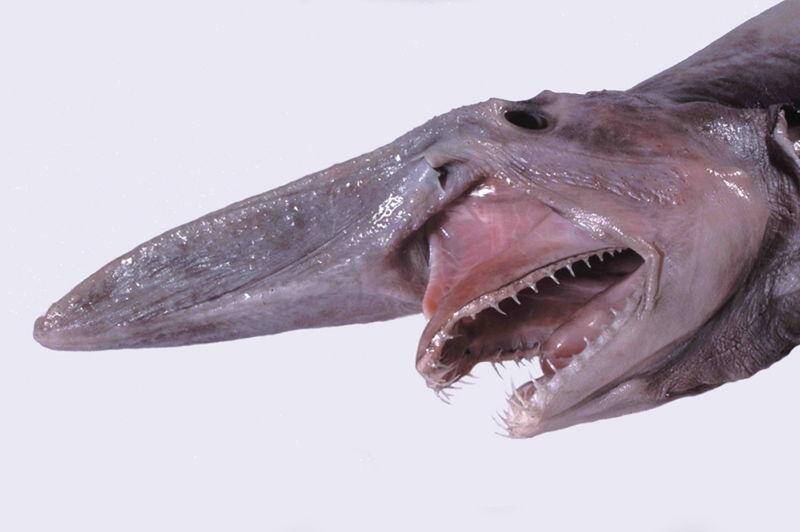
| Scientific Name | Mitsukurina owstoni |
| Where It Lives | Deep sea habitats worldwide, often near continental shelves |
| What It Eats | Deep-sea fish, crustaceans, and cephalopods |
| Conservation Status | Least Concern, but data deficient in some regions |
Fun Fact: The family of the Goblin Shark can be traced back 125 million years.
You can also call the Goblin shark a living fossil. This shark is easily identifiable by its long snout, protruding jaws, and semi-translucent skin.
Due to its semi-translucent nature, the skin may appear to be pink because its blood is visible through its skin. The older it gets, the darker it becomes.
15. Golden Masked Owl
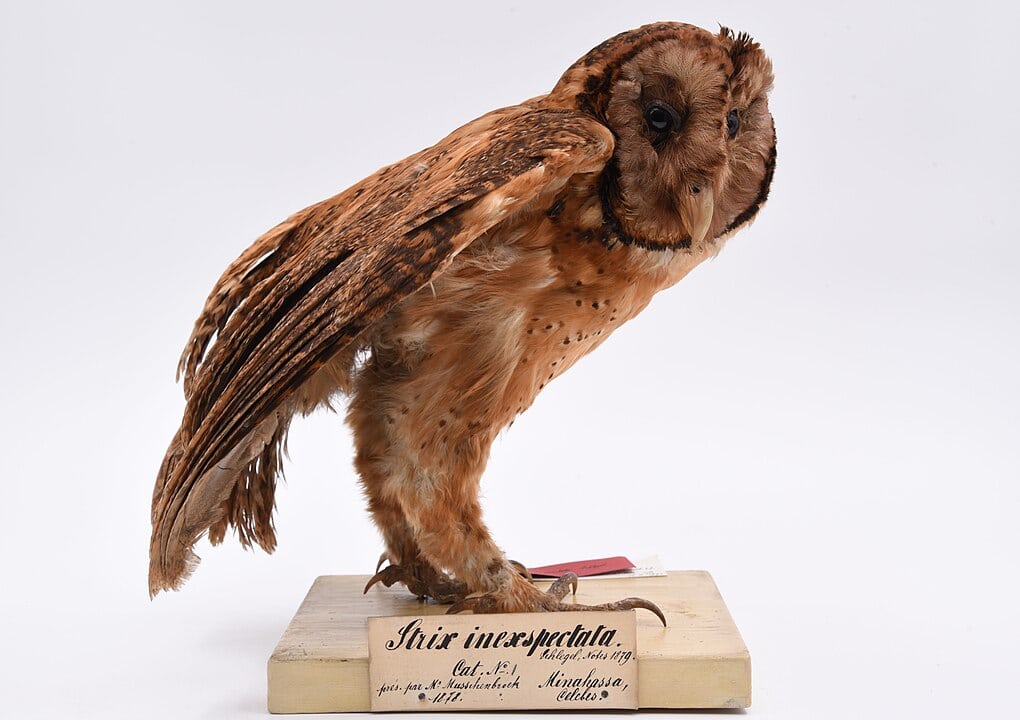
| Scientific Name | Tyto aurantia |
| Where It Lives | Found in New Britain and New Ireland in the Bismarck Archipelago, Papua New Guinea |
| What It Eats | Small mammals, birds, and insects |
| Conservation Status | Not well-studied, but habitat loss is a potential threat |
Fun Fact: This owl does not hoot; it screeches.
This owl inhabits tropical forests in New Britain and Papua New Guinea. Its heart-shaped, white face characterizes it.
It possesses strong legs and talons to scoop up prey from the ground.
16. Goldfish
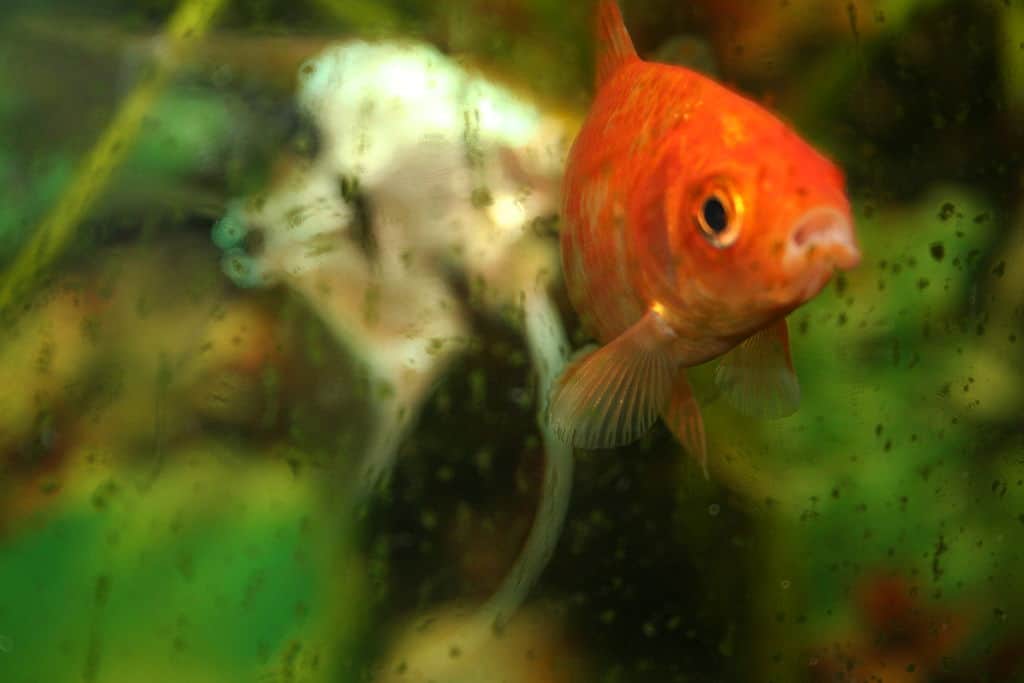
| Scientific Name | Carassius auratus |
| Where It Lives | Domesticated species found worldwide in aquariums and ponds |
| What It Eats | Plant matter, insects, and small crustaceans |
| Conservation Status | Not applicable (domesticated species) |
Fun Fact: Goldfishes can live up to 40 years.
Goldfishes have been kept as pets for a very long time now. Their coppery gold color is found on no other fish, and they don’t have scales on their heads.
17. Gorilla
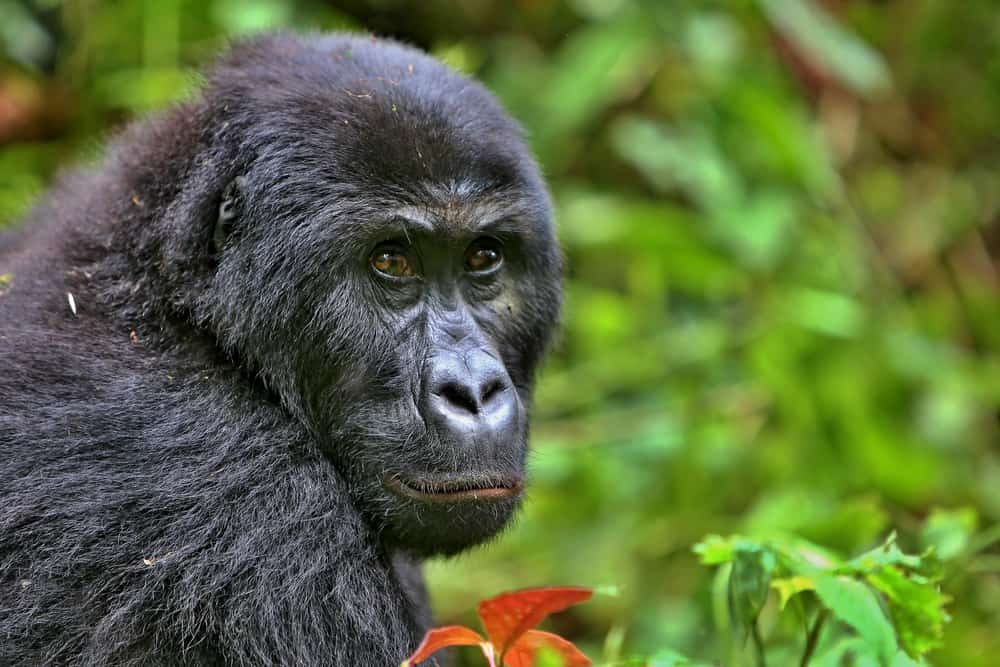
| Scientific Name | Gorilla spp. |
| Where It Lives | Forests of central Sub-Saharan Africa |
| What It Eats | Primarily herbivorous, eating leaves, stems, fruits, and occasionally insects |
| Conservation Status | Ranges from Critically Endangered to Endangered, depending on the subspecies |
Fun Fact: Gorillas are one of the closest living relatives to humans, sharing 98 percent of their DNA.
Gorillas feature a black fur cover all over except for their faces. They have broad chests and muscular arms. A gorilla is four to six times stronger than a human.
Gorillas are shy unless they are threatened or harassed. They eat vegetables primarily.
18. Gray Fox
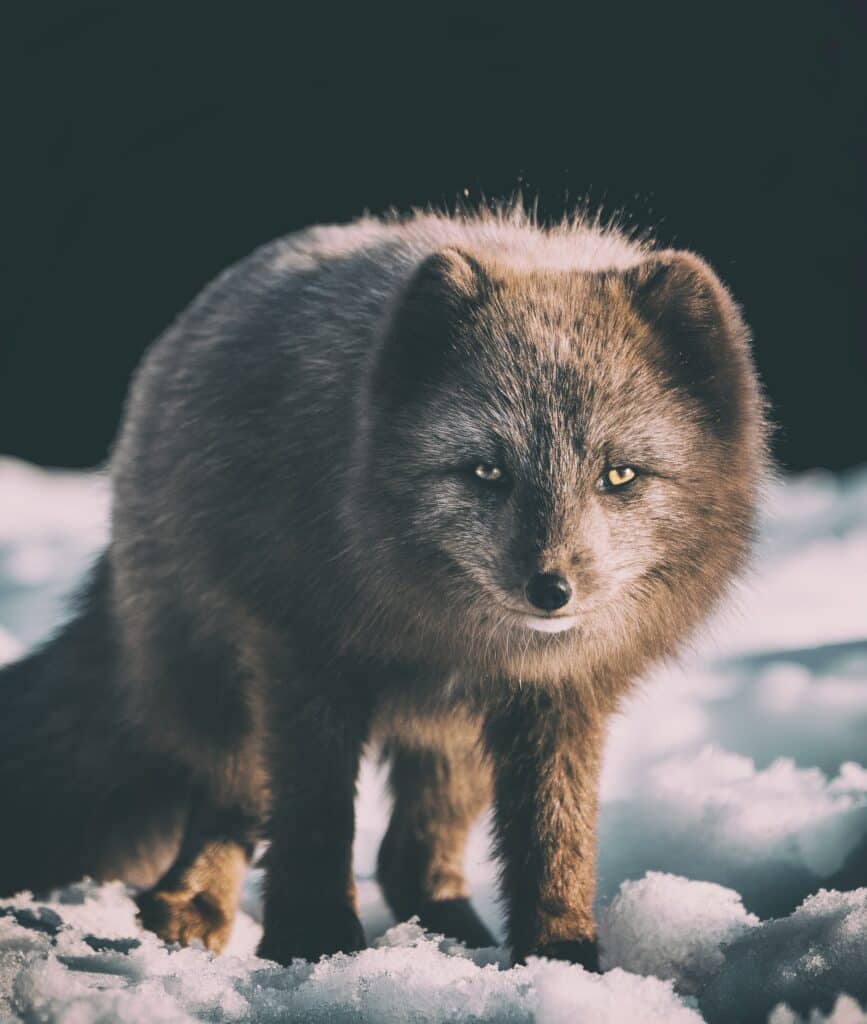
| Scientific Name | North and Central America, in a variety of habitats including forest, shrubland, and dessert |
| Where It Lives | North and Central America, in a variety of habitats including forest, shrubland, and deserts |
| What It Eats | Omnivorous diet, including small mammals, insects, corn, fruits, and vegetables |
| Conservation Status | Least Concern |
Fun Fact: The Gray Fox buries leftovers in the ground, marks it with urine, and comes back to dig it up.
The gray fox is distinct for its cat-like snout, short legs, retractable claws, and a coat of silvery gray fur.
Its retractable claws help it to climb trees.
19. Great White Shark
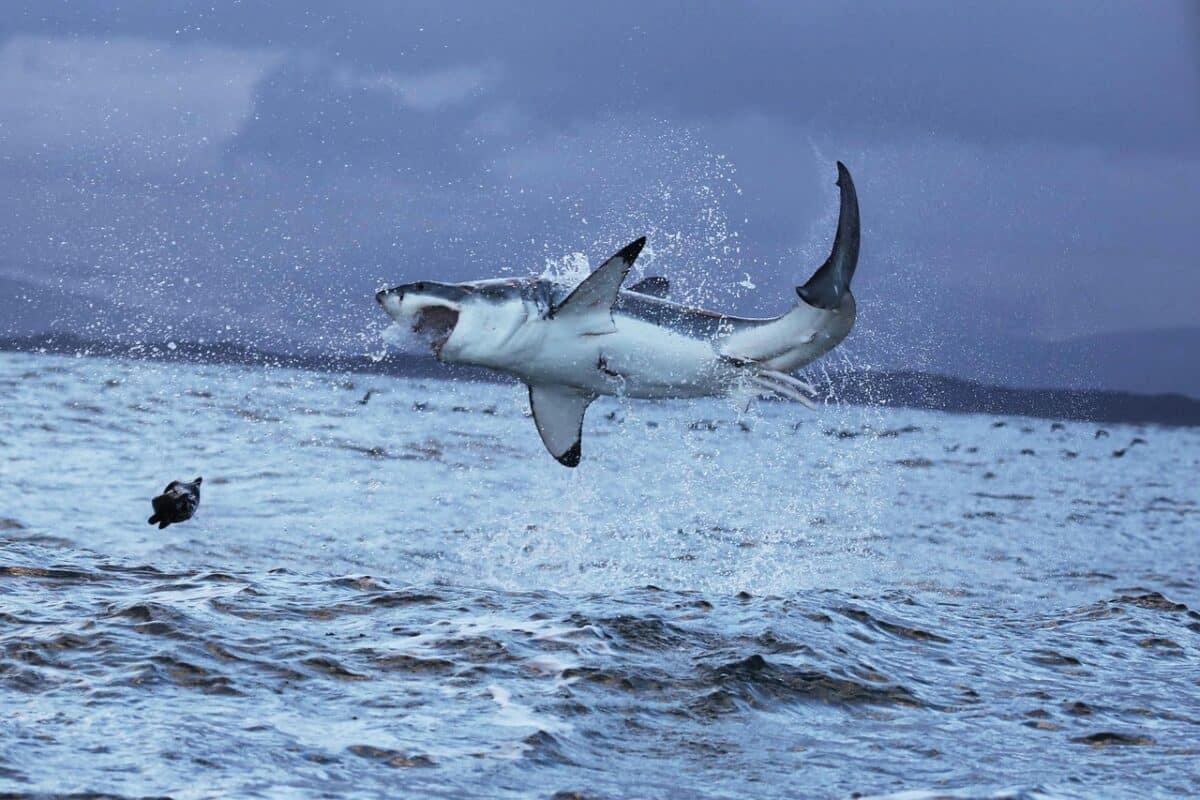
| Scientific Name | Carcharodon carcharias |
| Where It Lives | Coastal surface waters in all major oceans |
| What It Eats | Large fish and marine mammals |
| Conservation Status | Vulnerable |
Fun Fact: They have bad eyesight and rely on their senses to hunt prey.
This is a large predatory fish and one of the most prolific man-eaters on the planet.
Sharks have a characteristic appearance with large, torpedo-shaped bodies and a pointed snout.
20. Grizzly Bear
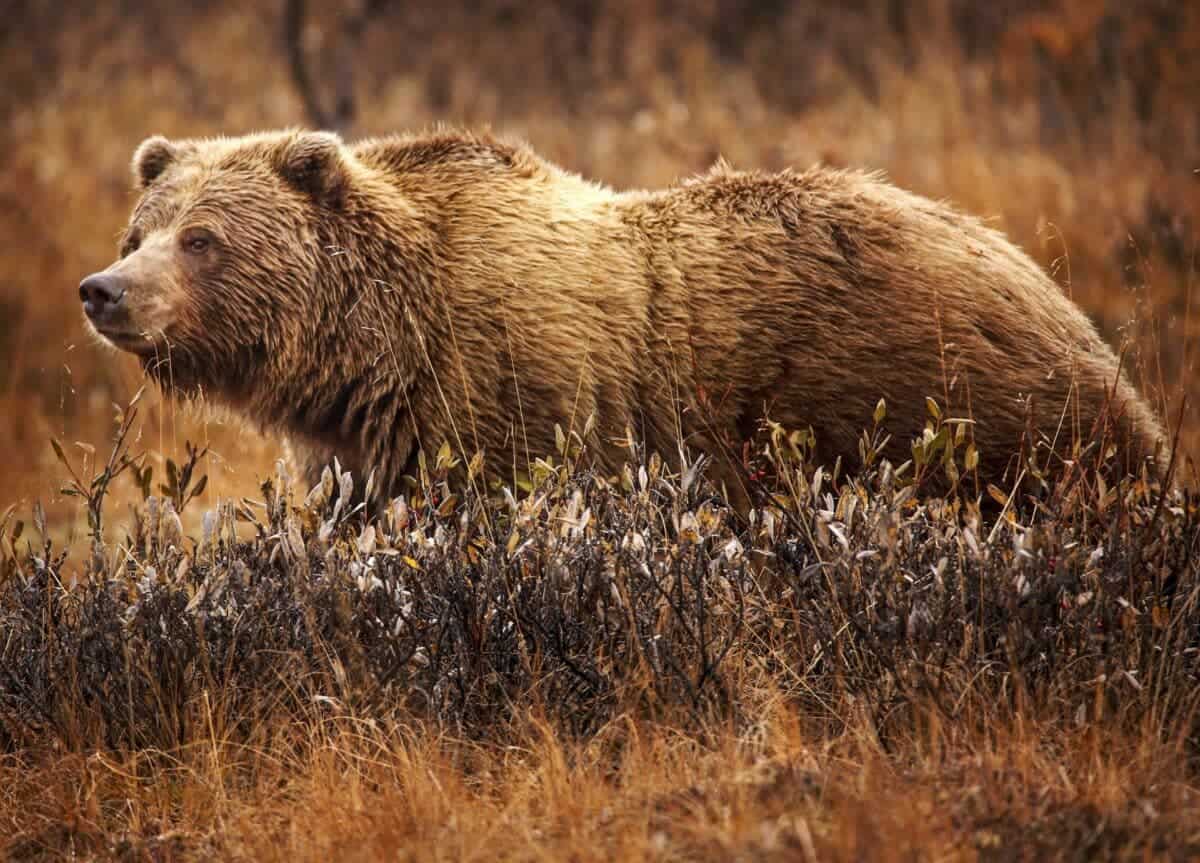
| Scientific Name | Ursus arctos horribilis |
| Where It Lives | North America, in habitats ranging from dense forests to subalpine meadows, open plains, and Arctic tundra |
| What It Eats | Omnivorous, with a diet ranging from fish, mammals, and carrion to roots, berries, and grasses |
| Conservation Status | Depending on the region, they can range from Least Concern to more protected statuses due to declining populations |
Fun Fact: Grizzly Bears have a better sense of smell than bloodhounds.
The Grizzly bear is a North American endangered species. It is notable for its short tail, short round ears, claws, and big brown body.
Its diet is 90 percent vegetarian.
Summary of Animals that Start With G
I hope you found this list exciting. It was wonderful sharing this with you. And we’ve got more. Take a look at this list of animals that start with p. Enjoy!
You might also like to read our other A-Z Animals. Here you go:
- Animals That Start With A
- Animals That Start With B
- Animals That Start With C
- Animals That Start With D
- Animals That Start With E
- Animals That Start With F
- Animals That Start With H
- Animals That Start With I
- Animals That Start With J
- Animals That Start With K
- Animals That Start With L
- Animals That Start With M
- Animals That Start With N
- Animals That Start With O
- Animals That Start With P
- Animals That Start With Q
- Animals That Start With R
- Animals That Start With S
- Animals That Start With T
- Animals That Start With U
- Animals That Start With V
- Animals That Start With W
- Animals That Start With X
- Animals That Start With Y
- Animals That Start With Z
- Animals and Wildlife in the Bahamas - October 20, 2024
- Discover the Fascinating World of Long-Neck Dinosaurs - October 20, 2024
- Jurassic World Dominion Dinosaurs - October 20, 2024

